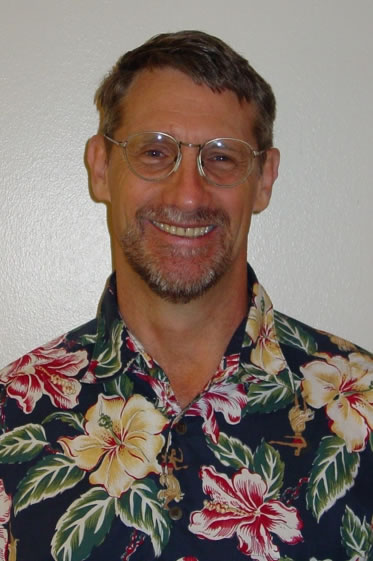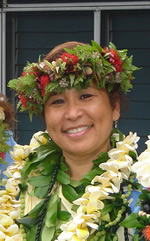Archived Content from Conference Held in May 2007
Home | Themes | Workshops | Schedule | Registration | Location & Accommodations
Bridging Contexts, Making connections
Featured Speaker
Language Immersion Teacher Education and Hawaiian Medium Schools: A Story of Innovation and Collaboration |
| William H. “Pila” Wilson, Keiki Kawai’ae’a, University of Hawai’i Hilo |
Abstract
Hawai'i is the only state in the United States that has designated a native language, Hawaiian, as one of its two official state languages. The Kahuawaiola Indigenous Teacher Education Program is a three-semester post-baccalaureate program, delivered primarily through the medium of Hawaiian, specifically designed to prepare Mauli Ola Hawai‘i (Hawaiian identity nurturing) teachers of the highest quality to teach in Hawaiian language medium schools, Hawaiian language and culture programs in English medium schools, and schools serving students with a strong Hawaiian cultural background.
Based on the Hawaiian concepts Ma ka hana ka ‘ike (Knowledge comes from direct experience), and Ma mua ka hana, ma hope ka wala‘au (Direct experience comes first, discussion comes second), Kahuawaiola places a high value on on-site learning and practicum experience with high performance outcomes. Academics are integrated in a spiraling sequence and holistic indigenous approach utilizing the classrooms and outside environment for a balance of theory and applied learning situations. The four areas of teacher preparation throughout the program include, 1) Hawaiian language, culture, and values; 2) pedagogical skills; 3) knowledge of content; and 4) development of professional qualities.
This presentation provides information on the story of Hawaiian language revitalization through preK-12 Hawaiian language immersion schooling with supportive tertiary level language and culture teaching and teacher development. The information provided in the is geared toward language teacher educators, teachers, community members, students, and linguists involved with Native American languages as well as others with an interest in the model. Attention will be given to the stages of indigenous immersion program development from initial interest of young college age adults to the creation of preschools for their children which then develop into preK-12 programming. The many challenges in navigating school systems and sometimes conflicting community interests will be discussed with suggestions for addressing them.
 William H. “Pila” Wilson
William H. “Pila” Wilson
Professor and Chair
Hawaiian Studies Division
University of Hawai’i Hilo
Dr. William H. Wilson (Pila) is founding chairperson of the program that developed into what is now the state of Hawai’i' s Hawaiian language college at the University of Hawai’i at Hilo. The college is conducted through Hawaiian and serves approximately 120 majors per year. It also includes a Hawaiian medium P-12 laboratory school. Wilson's family along with that of Keiki Kawai’ae’a were key players in reestablishing schools in Hawaiian after such schools had been banned for 90 years. He has written the proposal for every program in the college from its initial B.A. through to its current Ph.D. Originally a translator of Hawaiian language legal documents, Wilson has been very active in developing legislation both on the state and national levels in support of the use of Native American languages in education.
 Keiki
Kawai’ae’a
Keiki
Kawai’ae’a
Director, Kahuawaiola, Program Director
Hale Kuamo'o/Hawaiian Language Center
Hawaiian Studies Division
University of Hawai’i Hilo
Keiki Kawai’ae’a is the founder and director of the Kahuawaiola Indigenous Teacher Education Program, the first teacher education program taught entirely in a Native American language. The Kawai’ae’a family along with that of Pila Wilson were key players in reestablishing schools in Hawaiian after such schools had been banned for 90 years. Keiki began her career as an elementary teacher of Hawaiian language and culture in a private English medium school for Hawaiians. She left that position to open the first Hawaiian immersion school on her family’s ancestral island of Maui. She was recruited in 1989 to the University of Hawai’i at Hilo to run the then newly established Hale Kuamo’o, the state's center for the Hawaiian language. The Hale Kuamo’o is the primary source of curriculum materials for Hawaiian immersion schools. Keiki has been a key figure in Hawai’i in developing the structures within the state of Hawai’i to provide for the unique licensing and support structures for Hawaiian immersion teachers.


